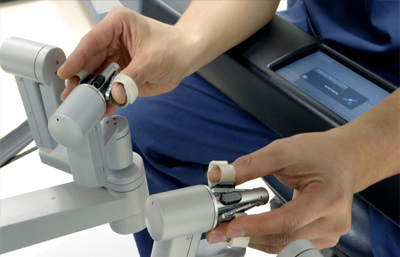What is meant by robotic surgery? Does a robot actually operate on me?
Although there have been some robot prototypes that have done certain surgical procedures, modern day robotic surgery is carried out by humans. The robots are actually controlled by the surgeons. This is referred to as a master-slave system. The robot therefore acts as an interface.
Robotic surgery combines the two ways of doing surgery – the traditional open method of operating and the modern laparoscopic way of doing procedures.
Okay, that sounds complicated for us lay people. Can you elaborate, please?
Sure, I will try!
With the traditional open surgery, the surgeon sees everything through a large cut (incision) he has made in the tummy (abdomen). He needs powerful lighting to see the space through the cut he has made, but his (or the poor assistant’s) head can sometimes get in the way casting shadows and preventing him/her doing a good job. Also, since the cut goes through skin, muscle and deeper tissue, in the post operative period there is likely to be a lot of pain. This then requires significant amount of painkillers.





